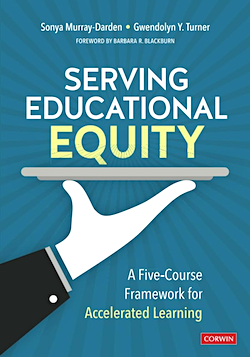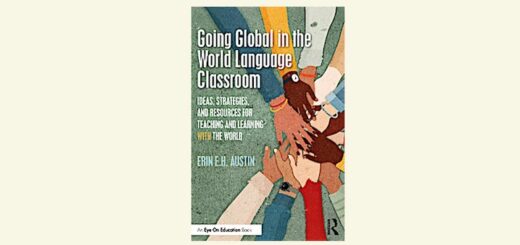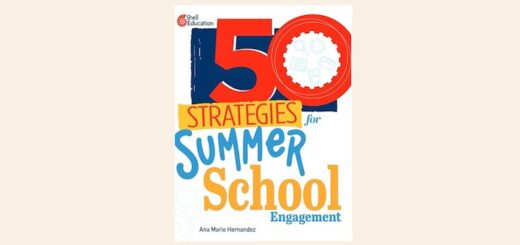Marrying Metacognition and Reciprocal Teaching
The authors of Serving Educational Equity: A Five-Course Framework for Accelerated Learning (Corwin, 2023) share an important insight than can help struggling readers in the middle grades move beyond just skimming text by understanding their own cognitive processes.
By Sonya Murray-Darden and Gwendolyn Turner

Sonya Murray
Sonya remembers it vividly as a fifth-grade teacher at a large urban school where her students struggled to comprehend the text they were reading. They thought reading involved skimming through the pages of the text and regurgitating words.
“I finished reading the book,” they would say proudly. When asked about the book’s details or main ideas, many would say, “I am not sure what it was about.” As she delved deeper into research and practice for a solution, Sonya realized that her students needed to apply the critical strategy of metacognition to understand what they were reading.

Gwen Turner
“It was that realization that changed my teaching and learning practices. I began supporting students to use metacognition strategies through reciprocal teaching. Over the years, I was able to advance their learning by giving them the tools they needed to stop skimming and go deep.”
“As I continued to work with students who struggled with reading, I realized that they could be empowered to become effective, efficient readers when we help them expand their cognitive knowledge and skills.”
Metacognition involves the knowledge and regulation of one’s own cognitive processes and can be influenced by motivations, goals, perceptions, context, and cultural norms (Van Kraayenoord, 2010).
It’s the reading superpower for accelerated learning!
Understanding Metacognition in Reading
Metacognition in reading involves understanding and actively controlling your thought processes while you read. It is more than just deciphering words; it’s about comprehending, analyzing, and retaining information effectively (Baker & Beall, 2009).
Reciprocal teaching is an instructional activity that takes the form of a dialogue between teachers and students regarding text segments as we construct the meaning of text. It’s a reading technique that promotes students’ reading comprehension. Connecting metacognitive strategies with reciprocal reading provides robust instruction and learning.
Here are a few strategies to consider:
Setting Goals: Before students start reading, it’s essential to help them set clear goals for their reading session. Whether students read for leisure or an assessment, knowing what to accomplish helps them stay focused and engaged.
Monitoring Comprehension: Effective readers continuously monitor their understanding of the text. This involves regularly checking if they comprehend what they are reading. If they encounter difficulty or confusion, they acknowledge it and take action.
Using Fix-up Strategies: Metacognitive readers employ a variety of strategies to enhance comprehension. These strategies may include previewing the text, making predictions, asking questions, visualizing, and summarizing. They adapt these strategies to the type of text they are reading. As Barbara Blackburn (2013) suggests, we can help students improve their own learning when we provide modeling, offer cues, and facilitate as they work to solve problems.
Problem-Solving: When faced with challenging passages or unclear sections of text, metacognitive readers actively work to identify the issue, whether a complex vocabulary word or a vague concept, and find solutions. This might involve looking up definitions or seeking additional resources.
Self-Assessment: Metacognitive readers regularly reflect on their reading experiences. They ask themselves, “Am I understanding this?” and “Is my current strategy working?” They make adjustments if necessary to improve their comprehension.
Benefits of Metacognition in Reading
Improved Comprehension: Metacognitive readers have a deeper understanding of the material. They can better connect the dots between ideas, recognize themes, and remember essential information.
Enhanced Retention: By actively monitoring their understanding and using strategies, metacognitive readers retain information better. This is invaluable for students who need to recall information for exams or professionals who want to remember important details.
Increased Engagement: Setting goals and employing strategies to understand the material keeps readers engaged in the text. Metacognition makes reading an active rather than passive process.
Time Efficiency: Metacognition can help students read more efficiently. By recognizing when they need to review or clarify information, they can avoid rereading entire passages and save time.
Lifelong Learning: Metacognition in reading is a skill that can benefit our students throughout life. It’s not limited to academic reading; it can help them become a more informed, critical, and analytical readers in any context.
Acceleration Activities
Educators should integrate learning activities and strategies that require students to engage in problem-solving, critical reading, and reflective writing as they explore concepts and use their metacognitive skills with grade-level content.
Each of the following acceleration activities is described in the Time to Dig In Tools section of our book from Corwin, Serving Educational Equity.
| Instructional Concept | Learning Activity |
| Reciprocal Questioning (Palinscar & Brown, 1984) | Dialogue where students take on the role of teacher and generate questions. |
| Reciprocal Teaching (Oczuks, 2003).
|
Students take the role of teacher while predicting, generating, clarifying, and summarizing. |
| What is Reciprocal Teaching
Reciprocal Teaching Prompt Card
|
Reciprocal teaching is an instructional activity in which students become teachers in small group reading sessions. Teachers model then help students learn to guide group discussions using four strategies: summarizing, question generating, clarifying, and predicting. Once students have learned the strategies, they take turns assuming the role of the teacher in leading a dialogue about what has been read. |
Unlocking Deeper Reading
As educators – including new teachers and those with high numbers of struggling readers – grapple with the best instructional approaches and resources to accelerate students’ learning, metacognition and reciprocal teaching can be used to help students find success. Metacognition in reading is a cognitive superpower that can transform the reading experience from mundane to exceptional.
By actively engaging with the text, setting goals, and employing strategies, you can unlock a deeper level of comprehension and retention. Whether you’re a student striving for academic success or a lifelong learner seeking to absorb the riches of the written word, metacognition in reading will be a guiding light on the path to reading mastery.
We recommend teachers help students to think about their thinking and more deeply about what they are reading. To meet their students’ needs, they must include procedures and plans for moving students forward on the journey to acceleration.
References
Baker, L. & Beall, L. C. (2009). Metacognitive processes and reading comprehension. In S. E. Israel & G. G. Duffy (Eds.), Handbook of research on reading comprehension (pp. 373- 388). New York: Routledge.
Blackburn, B. (2013). Rigor is not a four-letter word. New York: Routledge.
Hess, K. (2023). 5 Metacognitive Tools to Reveal Hidden Learning. MiddleWeb,
Murray-Darden, S., & Turner, G. (2023). Serving Educational Equity: A Five-Course Framework for Accelerated Learning. Thousand Oaks, CA: Corwin.
Oczuks, L. (2003). Reciprocal teaching at work: Strategies for improving reading comprehension. Newark, DE: International Reading Association
Palincsar, A. S. & Brown, A. (1984). Reciprocal Teaching of comprehension-fostering and comprehension monitoring activities. Cognition and Instruction, 1(2), pp. 117-175.
Reading Rockets (n.d.) Reciprocal Teaching: Why Use Reciprocal Teaching. Source.
Van Kraayenoord, C. E. (2010). The role of metacognition in reading comprehension. In Focal points of the research and development of pedagogically-psychological perspectives (Eds. HP. Trolldenier, W. Lenhard, and P. Marx), Gottingen: Hogrefe (pp. 277–302).

Dr. Sonya L. Murray-Darden is CEO of Equity Matters Consulting and a Missouri Leadership Development Specialist at Education Plus. She is a transformational leadership coach specializing in accelerating teaching and learning. She has three decades of experience as a researcher, entrepreneur, administrator, reading interventionist, and former teacher of the year. Visit her website www.equitymattersconsulting.org or see her at LinkedIn.
Dr. Gwendolyn Y. Turner is an emeritus professor, teacher educator, researcher, literacy consultant, and adult educator with over 40 years of working with students and educators to advance learning, spark curiosity, and empower marginalized learners.
Also see this MiddleWeb article by Murray and Turner on acceleration vs. remediation.


































